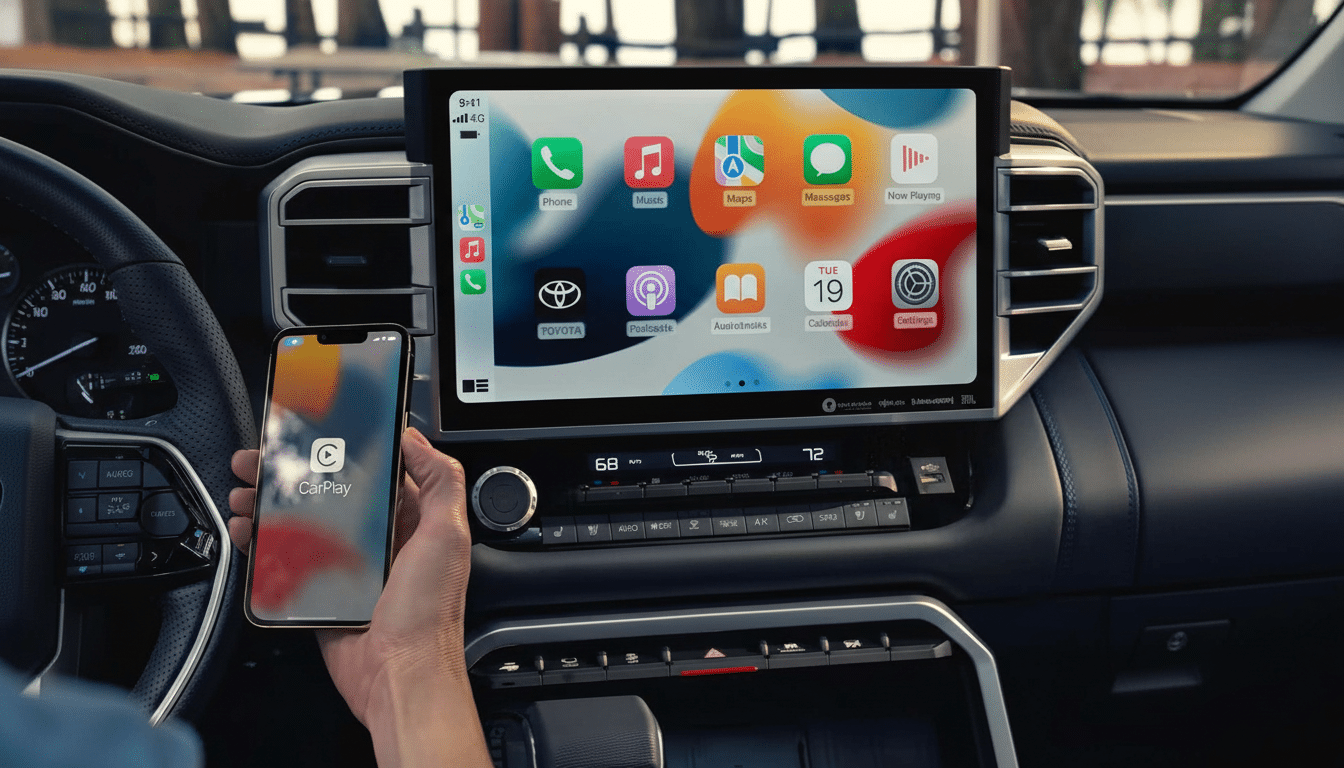Tesla is allegedly working on adding support for Apple CarPlay to its electric cars in a U-turn after years of resistance to third-party phone projection systems, the automaker’s infotainment head suggested Monday.
The work is in progress and could still be scuttled before release, Bloomberg reported.
- Why this would be a significant U-turn for Tesla
- What CarPlay in a Tesla could look like in practice
- The customer demand signal for CarPlay in Teslas
- Industry context and competition among automakers
- Strategic trade-offs for Tesla in supporting CarPlay
- What to watch next as Tesla evaluates CarPlay support

If it ships, CarPlay would resolve one of the most frequent requests from Tesla owners and shoppers who want to use the familiar apps, navigation, and voice assistant they’re already used to on their iPhones.
It would also represent a rare backpedaling on software control by Tesla, one of the twin poles of its product strategy for over a decade.
Why this would be a significant U-turn for Tesla
Tesla has resisted, to date, support for CarPlay or Android Auto in favor of original apps and strong integration across media, navigation, and vehicle controls.
The company includes Apple Music, Spotify, and Tidal natively, but some owners have decried laggardly performance and feature deficits relative to their mobile apps.
Some premium features, like listening to music via a cellular data connection, can be accessed only by signing on to Tesla’s Premium Connectivity plan for $9.99 per month or $99 a year. CarPlay might remove friction by allowing drivers to take their own apps and data with them, which could challenge how Tesla bundles connectivity and software features.
What CarPlay in a Tesla could look like in practice
Bloomberg’s report indicates that Tesla is aiming for the existing, standard version of CarPlay rather than the more extensive next‑gen experience Apple previewed in 2022. This suggests a sandboxed model: phone-fed maps, messaging, and media on the center screen, while Tesla keeps control over basic vehicle functions and the instrument cluster.
Technically, it should be possible over both USB and wireless connections; many automakers have already tuned wireless CarPlay for low-latency audio and fast Wi‑Fi handoffs. The big screens and customized UI in Tesla present design challenges, yet CarPlay scales across various sizes and even portrait or ultra‑wide setups like those that brands from Volvo to Porsche utilize.
Look for Siri voice control, Apple Maps, and third‑party audio apps as the first attractions. EV‑specific telemetry and HVAC controls would probably always stay in Tesla’s own UX unless Tesla rolled with Apple’s broader framework, which includes more embedded vehicle data and support for multiple displays.

The customer demand signal for CarPlay in Teslas
There is clearly consumer hunger for phone mirroring. A McKinsey poll determined that about half of drivers would refuse to buy a car that lacks CarPlay or Android Auto. Apple says CarPlay is available in the vast majority of new cars sold in the U.S., and its usage rates are high among iPhone owners when enabled.
J.D. Power’s infotainment studies find smartphone mirroring to be one of the most‑used features, whereas factory systems get middling satisfaction scores for app availability and voice recognition hassles; slow update performance doesn’t help. For Tesla, CarPlay could solve those pain points outright without having to completely rewrite its own software.
Industry context and competition among automakers
The timing is notable. General Motors has been eliminating CarPlay and Android Auto from its next‑generation EVs, instead opting for a Google‑based platform that features embedded apps. Ford, for its part, has reaffirmed plans to offer CarPlay across its lineup, EVs included, betting that flexibility will make customers happy.
In the premium segment, brands such as Porsche, Mercedes‑Benz, and Aston Martin have expressed interest in Apple’s next‑generation CarPlay that works with multiple screens and links to vehicle data. Tesla could even keep its unique UI if it went with regular CarPlay—meeting both drivers who value phone‑driven experiences on the road and those who prefer Tesla’s native interface.
Strategic trade-offs for Tesla in supporting CarPlay
The introduction of CarPlay may change in‑car interaction. Media, messaging, and navigation time would tip in favor of phone apps—potentially undermining the use of native Tesla services. On the flip side, happier customers could drive purchase intention and stickiness—especially in markets dominated by iPhone users that see CarPlay as table stakes.
There are data implications, too. Tesla has access to specific native app usage that doesn’t flow through CarPlay. Balancing the value of data against what buyers prefer is a strategic decision, and the move signals that Tesla perceives greater upside in going where its customers are rather than maintaining a closed ecosystem.
What to watch next as Tesla evaluates CarPlay support
Important questions include whether CarPlay will be standard across the lineup, how it will work with the Premium Connectivity service, and whether Tesla can offer wireless CarPlay from day one.
Owners will also look out for any restrictions around background navigation prompts or audio handoff when transitioning between native and CarPlay apps.
Until Tesla confirms plans, timing and cancellation still remain unclear. But even a look into CarPlay signals a more pragmatic bent: get drivers the software they want and lower the friction on everyday, in‑car tasks so that Tesla’s other differentiators—range, charging, driver assistance technology, and performance—can take up the load for the rest of owning a car.

